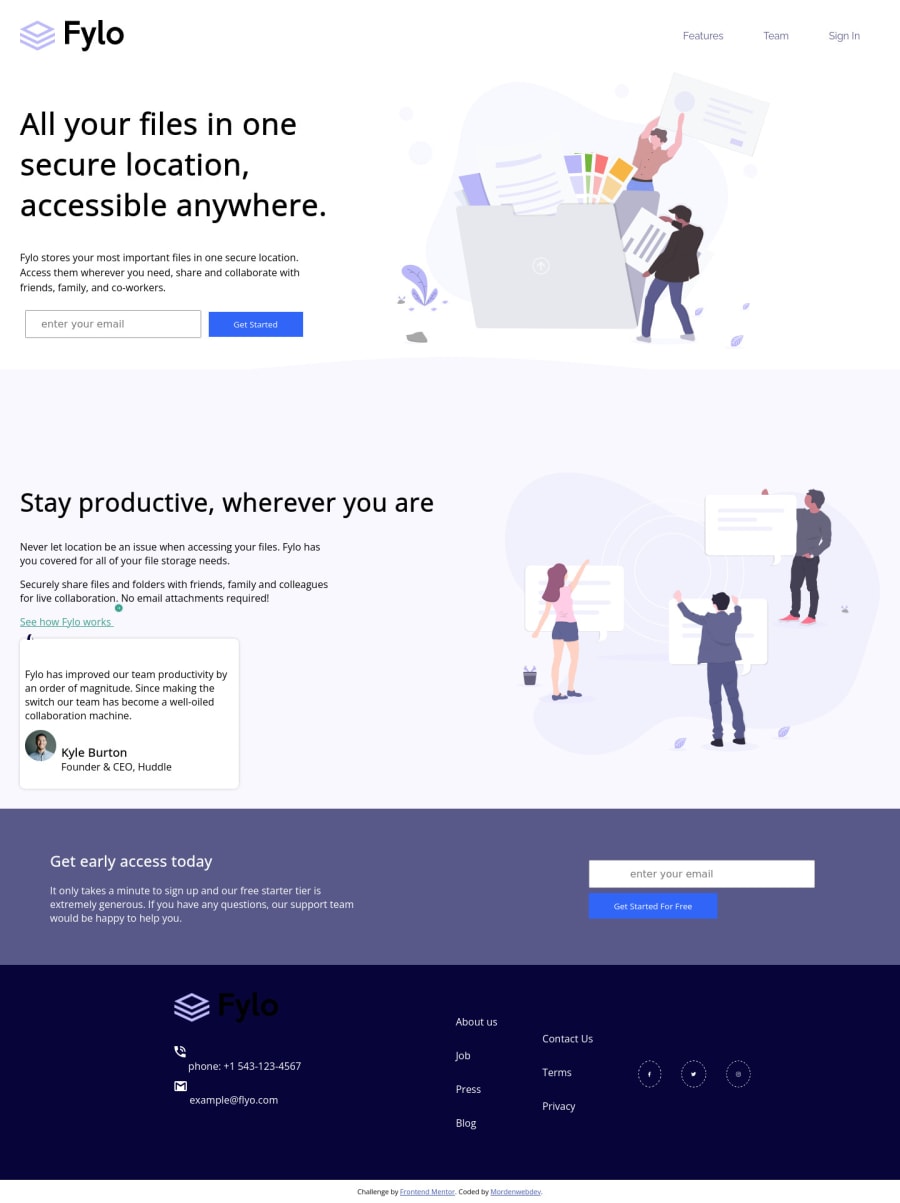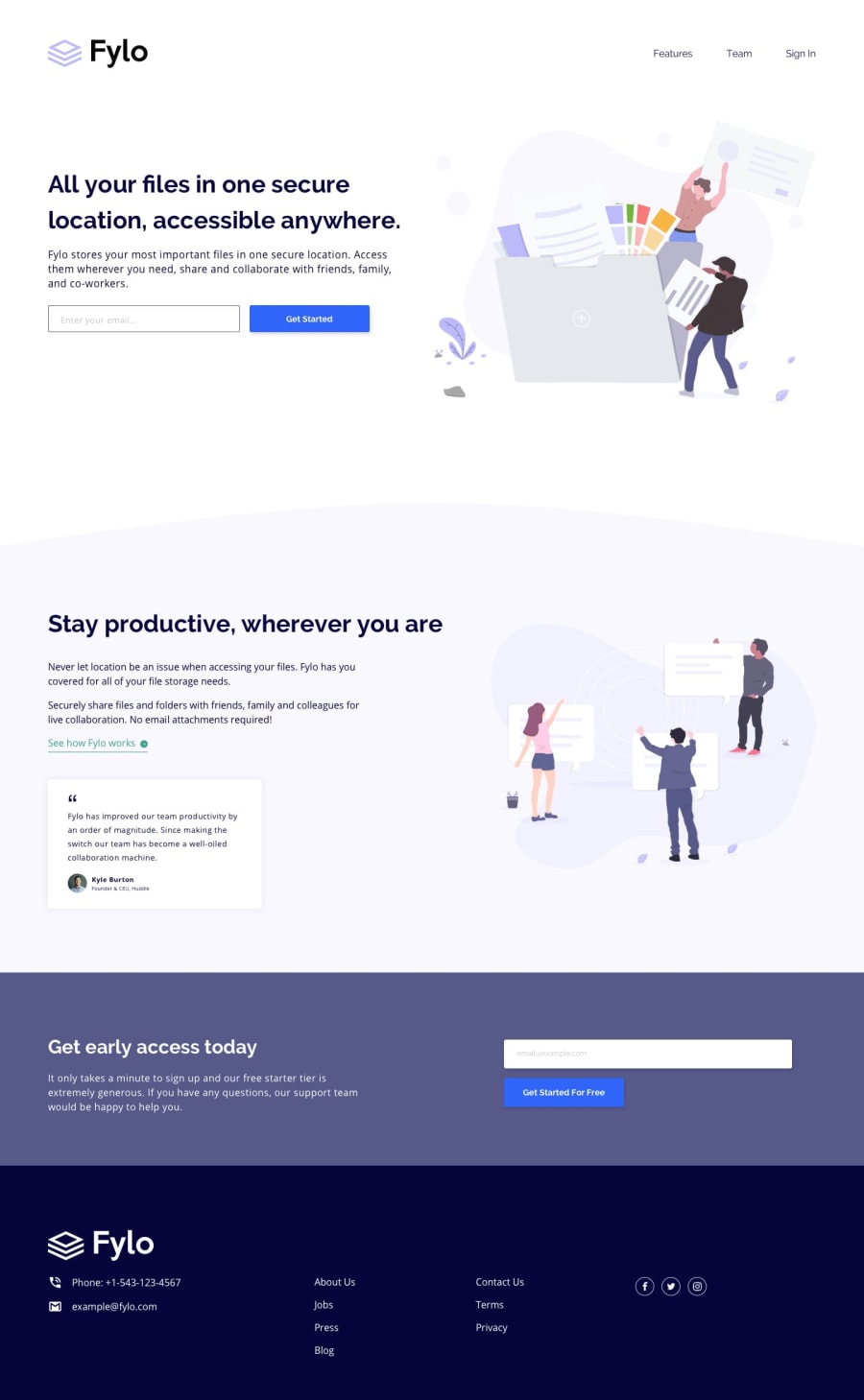
Submitted about 3 years ago
fylo-landing-page with html and CSS flexbox
#accessibility#foundation
@MordenWebDev
Design comparison
SolutionDesign
Solution retrospective
Hi, developers please provide any feedback it will be helpful. and don't mention there is no email validation. because I did not use JavaScript in this project. Just focusing on layout.
Community feedback
Please log in to post a comment
Log in with GitHubJoin our Discord community
Join thousands of Frontend Mentor community members taking the challenges, sharing resources, helping each other, and chatting about all things front-end!
Join our Discord
